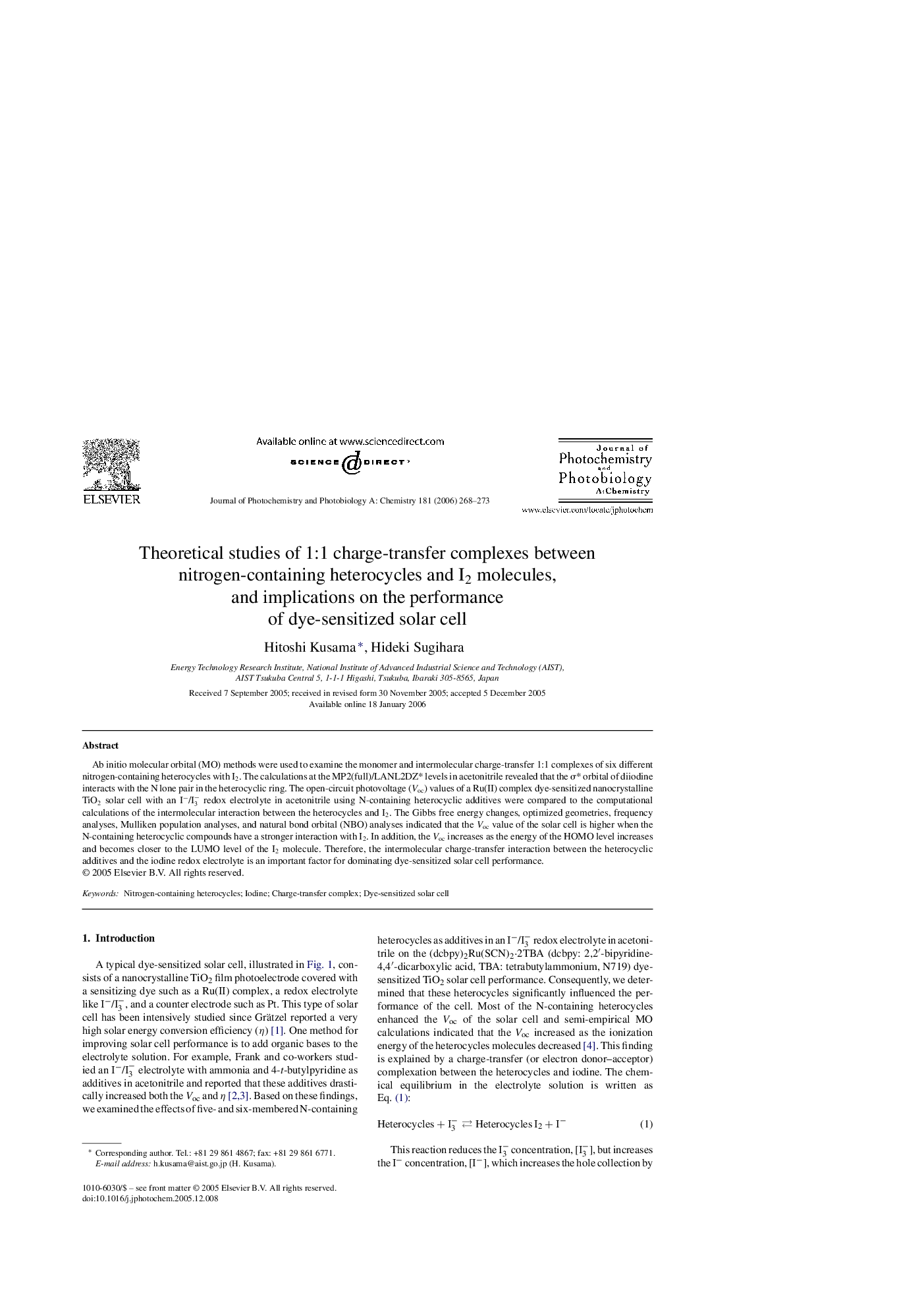| Article ID | Journal | Published Year | Pages | File Type |
|---|---|---|---|---|
| 28543 | Journal of Photochemistry and Photobiology A: Chemistry | 2006 | 6 Pages |
Ab initio molecular orbital (MO) methods were used to examine the monomer and intermolecular charge-transfer 1:1 complexes of six different nitrogen-containing heterocycles with I2. The calculations at the MP2(full)/LANL2DZ* levels in acetonitrile revealed that the σ* orbital of diiodine interacts with the N lone pair in the heterocyclic ring. The open-circuit photovoltage (Voc) values of a Ru(II) complex dye-sensitized nanocrystalline TiO2 solar cell with an I−/I3− redox electrolyte in acetonitrile using N-containing heterocyclic additives were compared to the computational calculations of the intermolecular interaction between the heterocycles and I2. The Gibbs free energy changes, optimized geometries, frequency analyses, Mulliken population analyses, and natural bond orbital (NBO) analyses indicated that the Voc value of the solar cell is higher when the N-containing heterocyclic compounds have a stronger interaction with I2. In addition, the Voc increases as the energy of the HOMO level increases and becomes closer to the LUMO level of the I2 molecule. Therefore, the intermolecular charge-transfer interaction between the heterocyclic additives and the iodine redox electrolyte is an important factor for dominating dye-sensitized solar cell performance.
